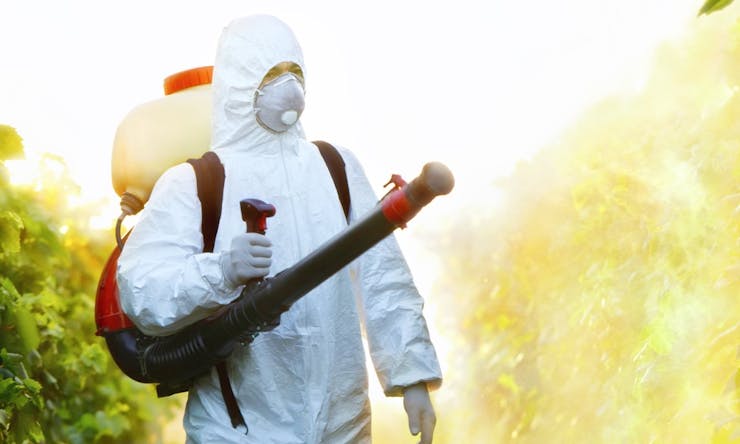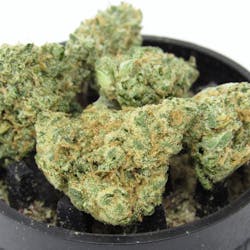Reports out of Washington state confirmed what many suspected but few had publicly acknowledged: Colorado’s cannabis pesticide problem isn’t just Colorado’s problem. It exists in every state.
Consumers in Colorado have been perplexed by a seemingly nonstop series of health and safety recalls, prompted by the discovery of pesticide residue in cannabis products ranging from flower to concentrates to edibles. In Washington state, consumers remained untroubled by the Colorado news, as their state-regulated industry seemed immune to pesticide recalls. What the industry knew—and most consumers didn’t—was that the lack of recalls didn’t equate to a clean bill of health. It mostly just meant the state wasn’t testing cannabis products for pesticides.
Now the truth is becoming more widely known. Far too many pesticide-tainted products are reaching the shelves in nearly all medical and adult-use states.
Cannabis consumers have a lot of questions. We’ll try to answer a few of them.
Will the pesticide residue on my cannabis make it into my bloodstream?
Yes. Simple answer. We have solid research on this, thanks mostly to Jeff Raber, founder of the Werc Shop cannabis analytic lab in Pasadena, Calif. Over the past few years Raber has been testing cannabis products and publishing the results in peer-reviewed scientific journals. Three years ago Nicholas Sullivan partnered with Raber and the Werc Shop’s Syzte Elzinga on a study of pesticide residues in cannabis smoke. They contaminated batches of flower with four common pesticides—diazinon, paclobutrazol, bifenthrin, and permethrin—and then measured how much came through in the mainstream smoke of two common smoking vehicle, a glass pipe and a bong. With a glass pipe, smokers inhaled about 65 percent of the pesticide on the leaf. Using a bong they took in about 50 percent of the pesticide. That transfers to the blood via the alveoli in the lungs.
In general, Sullivan, Raber, and Elzinga wrote in the Journal of Toxicology, “the portion of pesticide recovery is alarmingly high and is a serious concern.”
It’s especially concerning to medical patients using cannabis. Pesticide residue, they wrote, “can pose substantial threats to immuno-compromised patients or patients with other conditions, such as diseases of the liver, that may intensify the toxicological effects of pesticide exposure.”
Why are concentrates a bigger problem than flower?
Because the processes used to concentrate cannabinoids also concentrate pesticides. The Cannabis Safety Institute’s 2015 study found roughly 10 times the level of pesticides in concentrates as in flower, which was surprising given that cannabinoids are only two to five times more concentrated. There are a number of possible explanations for this. Extraction techniques may more efficiently concentrate pesticides; chronic contamination of extraction equipment may lead to cross-contamination; or the trim from which concentrates are made may be more heavily contaminated than the flower sold separately. In any event, the CSI white paper, produced by the Oregon labs OG Analytical and Phylos Bioscience, is highly recommended reading: clear, brief, helpful.
How toxic is ‘toxic’?
Great question. Nobody knows with enough specificity to say, “If you inhale X amount of diazinon, it will harm your liver exactly in this way.” The science of pesticide toxicity is a rabbit hole of difficult data, apples-to-oranges comparisons, variable types of toxicity (acute vs. chronic), and differing definitions of risk. Paclobutrazol, for instance, isn’t FDA-approved for use on food crops. But it is approved for certain food crops by the European Union. (If you want to know more about paclo, here’s a good place to start.)
In Seattle, the King County Public Health Department issued an advisory about pesticides and cannabis last fall. They wrote: “Because marijuana is often smoked or vaped and little is known about the effects of inhaled pesticides, it is important to learn more about the health effects of pesticide exposure both through inhalation (smoking) as well as through ingestion of marijuana products.”
In other words: Science doesn’t know much about inhaled pesticides, so it’s important to learn more about inhaling pesticides. Which science doesn’t know much about.
Thanks, Health Department.
In general, it’s safe to say that you don’t want to be inhaling pesticides. It’s also safe to say a tainted gram won’t kill you tonight.
Did pesticide residue become a problem just recently?
No. It became known recently. We’ve been inhaling and eating this stuff for years. Seven years ago, for example, the Los Angeles city attorney’s office acquired and tested three medical cannabis samples from local dispensaries. Two of the three samples were contaminated with exceedingly high levels of bifenthrin, a common pesticide that’s enormously toxic to bees but not so much to humans. Bifenthrin is relatively low on the risk scale, but one cannabis flower sampled by the L.A. city attorney contained 1,600 times the legal amount deemed safe for human consumption.
Last fall, Ricardo Baca and David Migoya of the Denver Post revealed that state regulators in Colorado knew as early as 2012 that cannabis was being grown with potentially dangerous pesticides. But with the EPA refusing to offer guidance (because cannabis is federally illegal), and growers opposing most restrictions, the Colorado Department of Agriculture made cannabis pesticide inspections a low priority.
If you want to drill down into the details of the exact pesticides found in the most recent Washington state revelations, click on the test results linked at the end of Tobias Coughlin-Bogue’s story. Then start comparing those various pesticides against EPA and EU reports on their varying levels of toxicity. Clear your calendar. You’ll be there a while.
Are we seeing an increase in pesticide use on cannabis plants?
Possibly. There are a number of theories going around right now. Here are four.
- Growers have always used unapproved pesticides, they’re just getting found out now that lab analysts, store owners, (some) regulators, and journalists have begun testing and questioning their products.
- State regulatory structures in Colorado, Washington, Oregon, and other states encouraged too many inexperienced farmers to enter the industry. Commercial pressures exacerbated the problem. Five years ago, rookie growers learned about pests, mold, and other plant killers through hard experience. But they learned in small grows, where the loss of a crop wasn’t that big a deal. Nowadays, if a farmer has $500,000 invested in a grow facility, one or two crop failures can bankrupt the entire operation. A grower may be more likely to save the crop by bombing it with an unapproved pesticide rather than lose the entire crop and face business failure.
- States are over-regulating some harms and under-regulating others. This is a popular theory in Washington state, and growers tell us there’s real truth to it. The state Washington State Liquor and Cannabis Board (LCB) was so concerned about keeping molds, fungi, and insects out of the finished product that they set exceedingly strict testing standards for cleanliness. At the same time, the LCB required no testing for pesticide residue, and budgeted almost nothing for pesticide enforcement. Also, states get no help or guidance from the EPA, which won’t even glance at cannabis so long as the plant remains federally illegal. That has created a situation where growers face crop rejection and the loss of serious money due to mold or insects, but face little to no risk for pesticide residue. Result: More growers showering their flower with pesticides to pass the state cleanliness test.
- Some farmers, working in good faith, have fallen victim to unscrupulous pesticide manufacturers. This doesn’t account for all the pesticide abuse, but it has happened. The Farm, for example, in Boulder, Colo., had to pull some of its product recently after abamectin residue was discovered. The Farm had been using Guardian, a popular “all-natural” pest control spray. Guardian’s manufacturer, an Illinois company called All In Enterprises, claimed the product contained no banned pesticides, only cinnamon oil, lemon grass oil, and other natural ingredients. In fact, the reason Guardian worked so well was because it secretly contained abamectin. Guardian was outed in January by the Eugene, Ore., lab OG Analytical, which detected the pesticide in batches of products grown only using Guardian. The Oregon Department of Agriculture ordered Guardian recalled, but not before the damage was already done to crops grown in Oregon and other states. All In Enterprises is now facing a class action lawsuit. You can read the dirty details here.
How and where can I find pesticide-free products?
You must demand them. Ask your bud tender if a specific product has been tested for pesticides. Ask which lab did the testing. If you’re concerned about pesticide residue, make it clear to your retailer that you are willing to pay more for clean product. Testing isn’t cheap. Growing organically isn’t easy. If customers want nothing but the cheapest, most potent products, that’s where the industry will go. If customers demand higher-quality, pesticide-free flower, concentrates, and edibles, producers and retailers will react accordingly. Your money talks.





